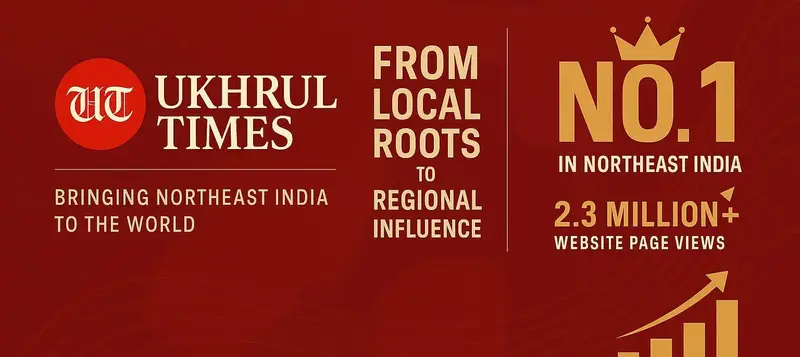Now Reading: World Environment Day 2025: Ending Plastic Pollution
-
01
World Environment Day 2025: Ending Plastic Pollution
World Environment Day 2025: Ending Plastic Pollution

ENVIRONMENTALISM is an appreciation of the natural world and its future. World Environment Day is celebrated every June 5. This year’s theme is “Ending Plastic Pollution”. Over the last 53 years, it has become the biggest wheel and the most significant global platform for environmental protection. This year, the Republic of Korea will be the host for the global event – World Environment Day 2025.
Plastic harms human health and biodiversity; pollutes every ecosystem from mountain tops to the ocean floor. Globally, more than 400 million tons of plastic is produced every year, half of which is single use. Of that, less than 10 per cent is recycled. An estimated 11 million tons end up in lakes, rivers and seas annually. That is approximately the weight of 2,200 Eiffel Towers all together.
The planet consumes 5 trillion plastic bags – that’s 20 lakhs a minute – 75 kg per person annually. If these plastics are put one after another, they could go around the earth seven times every hour and can cover half of India.
Some 98 per cent of single-use plastic products are from “virgin” feedstock. The level of greenhouse gas emissions associated with the production, use and disposal of conventional fossil fuel-based plastics is forecast to grow to 19% of the global carbon budget by 2040.
Microplastics – tiny bits of degraded polymers that are ubiquitous in our air, water and soil – have lodged themselves throughout the human body, including the liver, kidney, placenta and testes. It is estimated that each person consumes more than 50,000 plastic particles per year,weighing 5 gm per week –and many more if inhalation is considered.
University of New Mexico Health Sciences researchers have detected microplastics in human brains at much higher concentrations than in other organs–having increased 50 per cent over just the past eight years.
Wrong Lens and the Green Truth
When we act to reduce greenhouse gases, people think it is at the cost of the economy. Here, every country looks through the wrong lens. But the truth is if we save the climate today, it will be our economic opportunity for the future. The benefits of such interventions exceed nine times the cost of investment, whereas inaction is three times costlier than ecosystem restoration.
Every rupee invested in restoration can bring back ₹2,520 in ecosystem services. Restoration boosts livelihoods, lowers poverty and builds resilience and slows climate change. Restoring just 15 per cent of land could avoid up to 60 per cent of expected species extinctions.
Climate action is not for reducing emission but for choosing a path for new development and future job creation. We are at the crossroad. Our decision today will make the earth livable. If we don’t act today, mankind may become extinct from this planet. If humanity is to survive with the semblance of quality that we enjoy today, all of us need to act quickly to limit and reverse anthropogenic climate change and environmental destruction.
Climate change is the main driver of environmental degradation with all-time maximum temperatures recorded this year. Much of the world felt the impacts, not just in heat but flooding, melting glaciers, rise in sea levels, pandemics and flash floods, hurricanes, wildfires, drought, excessive snow or desertification. Globally, according to Prof. Schellnbur of Germany, climate change added equal heat of 4 atom bombs of 15 kilotons each second.
Fighting Climate Change in Manipur
Restoring the environment without tackling climate change would be like giving prescriptions without buying medicines. Thus, every nation should take a pivotal role to fight back climate change. In Manipur, there’s need for immediate restoration of all poppy and jhum cultivated areas.
Trees and forests are a critical part of environmental safeguard. Twenty per cent of earth’s oxygen is produced by forests. Every minute, forests to the size of 20 football fields are cut with 15 billion trees per year. By 2030, the planet might have only 10 per cent of its natural forests and all forests on the planet might be gone in the next 100 years. One ton of carbon is stored by a tree and gives out oxygen for 10 people.
Between now and 2030, afforestation of available 350 Mha of global degraded land could generate ₹657 trillion in ecosystem services and remove 25 gigatons of greenhouse gases that could be a big solution. In 2023, Manipur lost 13.9 kha of natural forests equivalent to 7.97 Mt of CO2 emissions.
Food Culture in Manipur a Challenge to Environment
Biodiversity loss is another challenge. Species, once lost, are lost forever and now it’s to the tune of 3 species per hour and the maximum of our species might be extinct by 2100. The oceans absorb 25 per cent of all human CO2 emissions. Due to climate change, ocean acidity is expected to increase by 150 per cent in 2100. If so, all the sea creatures including plankton which produces 65 per cent of all earth’s oxygen might be extinct.
A third of the food that humans consumes–around 1.3 billion tons–is wasted every day which will be enough to feed 3 billion people but emit 4.4 gigatons of greenhouse gas. The Manipuri style of feast is wasting too much food, challenging our economy and environment.
Peace Pact with Environment: From Action to Commitment
To understand real environmentalism, we must travel back to the 1920s where the world population had yet to reach 2 billion. The earth’s atmospheric CO2 was around 300 ppm, compared to 410 ppm today. It is the world that we dream of—Nostalgia of a rural era that was being rapidly lost to the slums and a worldview that celebrated a spiritual connection with the natural world, from Hinduism/Christianity/Islam to transcendentalism to paganism. And, a farrago of unscientific philosophies that hoped to restore humanity’s relationship with the environment. Modern environmentalism is the heir to both these traditions: the scientific and pragmatic and the spiritual and nostalgic.
We need to restore at least 1.5 billion hectares by 2030 if we are going to safeguard the web of life on Earth and avoid real consequences for ourselves. Now is the time to move from committing to action to acting on commitments to prevent, halt and reverse.
In the universe there are billions of galaxies, in our galaxy also there are billions of planets. But there is “Only One Earth”. How long we will survive on earth will depend on how we act today for the planet. We are the generation that can make a peace pact with the environment. On World Environment Day, 2025, let’s plant trees to take care of Mother Earth.
READ MORE: Biodiversity – a Sovereign Property
The author is an Environmentalist, presently working as District Forest Officer, Chandel district, Manipur. The author can be reached at nmunall@yahoo.in
(This is not a Ukhrul Times publication. UT is not responsible for, nor does it necessarily endorse its content. Any reports or views expressed are solely those of the author or publisher and do not necessarily reflect those of Ukhrul Times.)
















